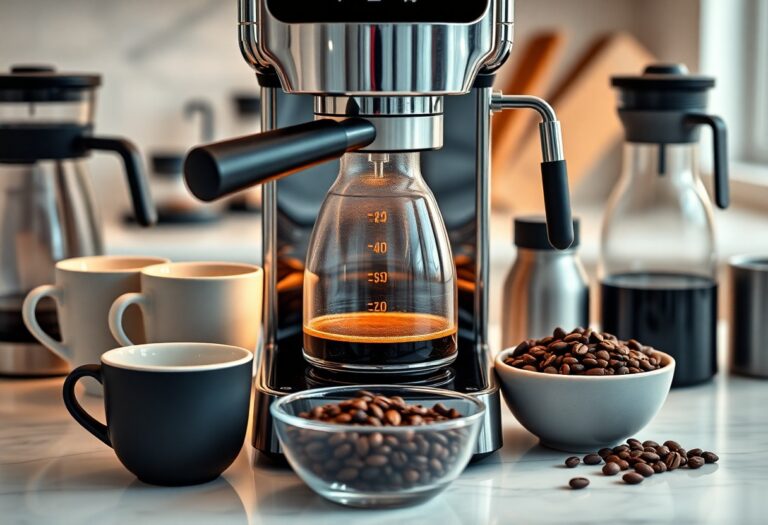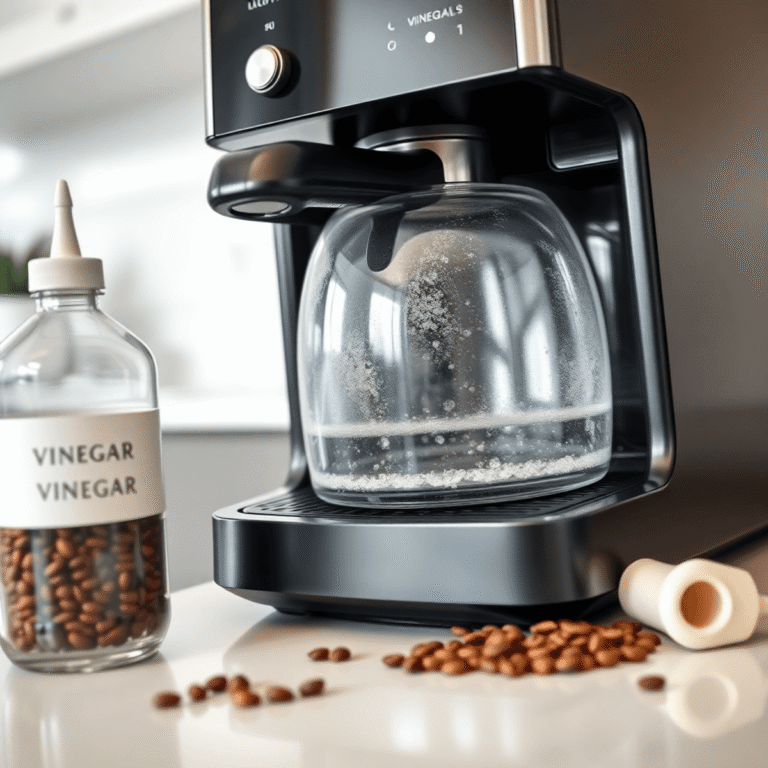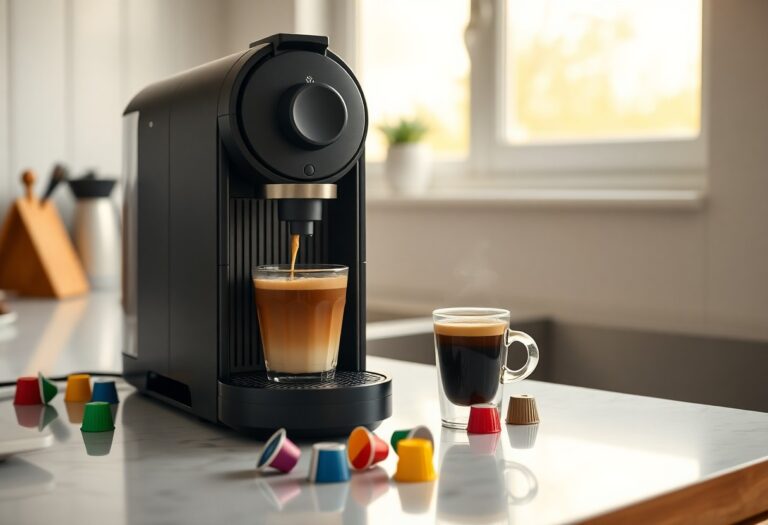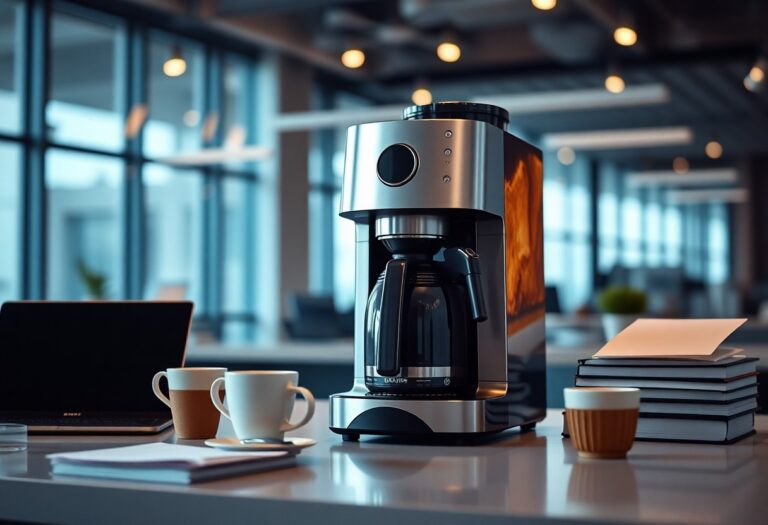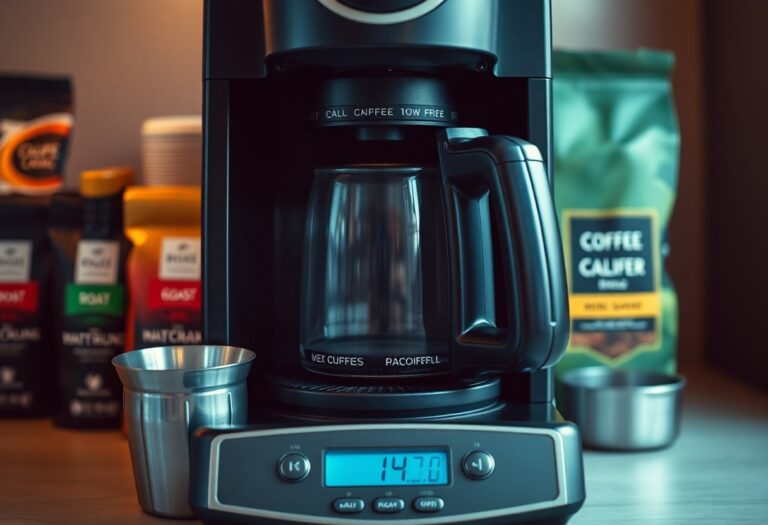How to Use a French Press Coffee Machine: Brewing Technique Guide
Using a French press coffee machine offers a straightforward and rewarding way to brew coffee. This brewing technique relies on steeping coarsely ground coffee beans in hot water, allowing rich flavors to develop through full immersion. The process is simple but demands attention to detail for the best results.
Mastering the proper brewing technique makes a significant difference in taste and texture. A poorly executed French press brew can lead to over-extraction or sediment-heavy cups, while precise control maximizes flavor clarity and body.
Benefits of using a French press include:
- Full extraction of essential oils and flavors
- Control over brewing variables like grind size and steep time
- A richer, more robust cup compared to drip or pod methods
This brewing technique guide will walk you through each step to help you unlock the full potential of your French press coffee machine. For those interested in exploring other brewing methods, such as using an espresso machine or filter coffee machines, these guides offer valuable insights as well.
Understanding the French Press Coffee Brewing Method
The French press coffee brewing method is based on immersion brewing, where coffee grounds steep in hot water, allowing for a full extraction of flavors. Here’s why this technique stands out:
1. Immersion Brewing Process
In a French press, the coffee grounds are fully immersed in hot water, promoting a thorough extraction of flavors. This method differs from drip brewing, where water passes through the grounds quickly.
2. Coarsely Ground Coffee Beans
The use of coarsely ground beans is crucial for French press brewing. A coarse grind size encourages optimal extraction without trapping fine particles that can make the coffee bitter.
3. Full Flavor Extraction
The immersion process in a French press ensures that the coffee grounds are in contact with water for an extended period, resulting in a rich and robust flavor profile that captures the essence of the beans.
By understanding these key aspects of the French press brewing method, you can appreciate how immersion and grind size play pivotal roles in achieving a flavorful and aromatic cup of coffee.
Essential Equipment for French Press Brewing
Using the right equipment enhances your French press coffee experience significantly. Three key tools make a noticeable difference in flavor and consistency:
1. Fresh roasted whole bean coffee
Freshness matters. Whole beans retain their oils and aromatics much longer than pre-ground coffee. Grinding just before brewing preserves these qualities, resulting in a richer, more vibrant cup. Coffee starts to lose flavor soon after roasting, so choosing beans roasted within the last two weeks is ideal.
2. Burr grinder
Consistency in grind size is crucial for proper extraction. A burr grinder crushes beans evenly to a coarse grind that resembles breadcrumbs—perfect for French press brewing. Blade grinders produce uneven particles, which cause over-extraction of fine grounds and under-extraction of larger pieces, leading to bitterness and imbalance.
3. Kitchen scale
Accurate measurement of coffee and water ensures you maintain the desired brew ratio every time. Using a kitchen scale allows you to replicate your favorite recipes precisely, eliminating guesswork. Common ratios hover around 1:15 to 1:17 (coffee to water), so weighing your input helps maintain balance and control over strength.
These tools work together to maximize flavor potential from your French press method. Fresh beans ground correctly and measured precisely create the foundation for a delicious cup before you even begin brewing.
Step-by-Step Guide to Using a French Press Coffee Machine
French press preparation steps:
- Rinsing the French Press: Start by rinsing the French press with hot water to preheat it. This step helps maintain the optimal brewing temperature for your coffee. For those who also use other types of coffee machines like Keurig or Krups, it’s essential to know that these machines require specific cleaning and maintenance procedures.
Coffee bean measurement and grinding process:
- Measuring Coffee Beans: Use a kitchen scale to weigh out the right amount of coffee beans. The recommended ratio is typically around 1:15 coffee to water for a balanced flavor.
- Grinding Coffee Beans: Grind your coffee beans to a coarse consistency, similar to breadcrumbs. This ensures proper extraction of flavors during brewing.
By following these steps, you set the foundation for a great cup of French press coffee. The key is to maintain precision in both the preparation and grinding of your coffee beans.
Brewing Process and Extraction Techniques in French Press Coffee Making
The brewing process in a French press involves a crucial step of pouring hot water over the grounds in a circular motion. This technique ensures even saturation of the coffee grounds, promoting consistent extraction of flavors for a balanced and flavorful brew.
Once the hot water is added, the coffee begins to steep, allowing the water to extract the desired flavors and compounds from the grounds. The ideal steeping time typically ranges from 4 to 5 minutes, depending on personal preference for strength and flavor intensity.
After the steeping process, it’s essential to engage in gentle stirring to break any crust that may have formed on top of the coffee. Stirring helps ensure that all the grounds are thoroughly saturated, promoting uniform extraction and a well-rounded flavor profile in your cup of coffee.
By understanding the importance of pouring technique, steeping duration, and gentle stirring, you can master the art of French press coffee making. These extraction techniques play a significant role in enhancing the overall quality and taste of your brewed coffee, allowing you to enjoy a rich and flavorful experience with every cup.
Final Steps, Serving Tips, and Advanced Techniques
Final Steps and Serving
After the steeping period and gentle stirring, you’ll notice a layer of foam or floating coffee grounds on the surface. Scooping off foam before pressing down plunger slowly for optimal results is crucial. Removing this foam prevents excess bitterness and unwanted sediment from mixing into your cup. Use a spoon to carefully skim off the foam without disturbing the grounds beneath.
Press the plunger down slowly and steadily. This gradual pressure keeps the grounds compressed at the bottom while minimizing agitation of sediment. A fast plunge can push fine particles through the mesh filter, resulting in a gritty texture in your coffee. Pour immediately after pressing to halt further extraction that could cause bitterness.
Serving directly from the French press to pre-warmed cups preserves the temperature and flavor integrity. Avoid leaving brewed coffee sitting in the French press, as prolonged contact with grounds leads to over-extraction and harsh taste.
Advanced Techniques
James Hoffmann’s approach addresses one of the main challenges with French press brewing: controlling sediment for a cleaner cup without sacrificing richness.
Key elements of his method include:
- Extended resting time: After initial 4-5 minutes steeping and stirring, wait an additional 5 minutes before pressing. This extra rest allows grounds to settle more firmly at the bottom.
- Partial plunger press: Instead of plunging fully, press only halfway down to separate most grounds but avoid stirring up settled sediment.
- Foam removal: Skimming off surface foam just before pressing reduces floating fines that contribute to muddiness.
This technique results in a smoother texture and clearer cup while maintaining the French press’s characteristic full-bodied flavor. You can experiment with these adjustments to find your preferred balance between clarity and mouthfeel.
Applying Hoffmann’s sediment control methods elevates your French press experience, making it possible to enjoy rich coffee with less grit—an excellent way to impress yourself and guests alike.
Cleaning, Maintenance, and Importance of Freshness in French Press Brewing
Cleaning and maintenance are crucial aspects of ensuring the longevity and quality of your French press coffee machine. Here are some key points to consider:
1. Proper Cleaning Steps
- After each use, disassemble the French press by separating the plunger and filter assembly from the glass or stainless steel container.
- Discard the used coffee grounds into a compost bin or trash.
- Rinse all parts with warm water to remove any residual coffee oils that can turn rancid and impact future brews.
- Use a mild detergent to deep clean the components if needed, ensuring all soap residue is thoroughly rinsed off.
- Air-dry the parts before reassembling to prevent mold growth.
2. Importance of Freshness in Coffee Beans
- Freshly roasted whole beans retain their optimal flavor profiles for a limited time before staling.
- Grind your beans just before brewing to preserve the volatile aromatic compounds that contribute to a flavorful cup.
- Store whole beans in an airtight container away from light, heat, and moisture to maintain freshness. You might also find these tips on how to store your coffee beans useful.
- Consider investing in a burr grinder for consistent particle size distribution, which impacts extraction and overall taste.
Understanding how cleaning, maintenance, and freshness intersect in French press brewing can elevate your coffee experience to new heights. By incorporating these practices into your routine, you can savor the rich flavors and nuances that freshly brewed coffee has to offer.
Conclusion
Learning how to use a French press coffee machine: brewing technique guide opens up a world of rich, full-bodied coffee flavors. The simplicity in French press brewing method can be misleading; paying attention to every detail in each step turns regular coffee grounds into an exceptional cup. The right grind size, precise measurements, proper water temperature, and controlled steeping time all play a role in bringing out the coffee’s deepest flavors.
Key points to remember:
- Using freshly ground, coarsely textured beans maximizes flavor extraction.
- Maintaining consistent brewing temperature ensures balanced taste.
- Gentle stirring and careful plunger pressing reduce sediment and bitterness.
This hands-on approach gives you greater control over your brew compared to other methods. It’s a rewarding ritual that emphasizes quality over complexity. You don’t just make coffee—you craft an experience defined by aroma, texture, and depth. Embrace the French press technique to elevate your daily cup beyond convenience into a celebration of coffee’s true character.


